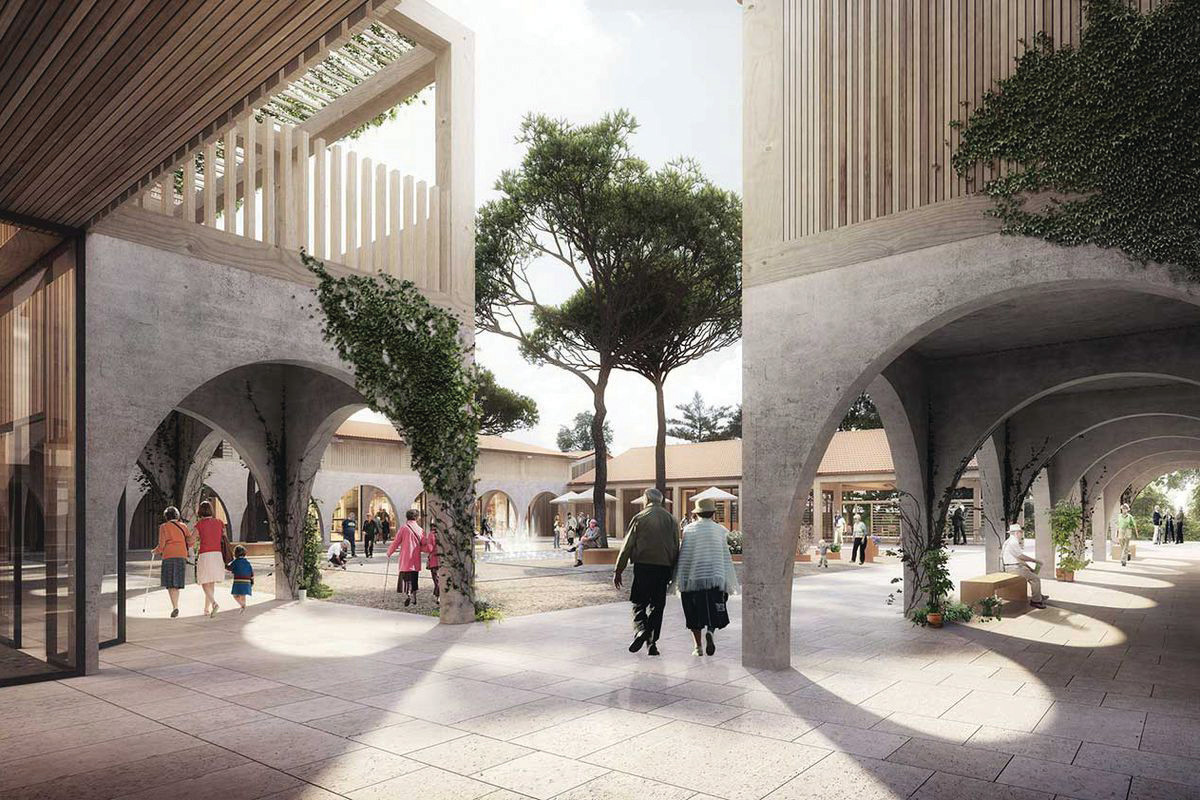New models for senior living cropping up worldwide
“It is what it is.” You probably hear that a lot — I certainly do. All at once, the phrase means basically nothing and speaks volumes about our willingness to accept the status quo.
And I get that. It’s hard to think about how things could be different, and even harder (maybe impossible) to move the mountains often required to effect change. But sometimes it’s valuable to peek over the fence or around the corner to see what “it is” in other places. That perspective can sometimes shape the way we approach our own life.
Although my work centers on helping seniors age in place, for one reason or another, I often find myself in nursing homes and assisted living communities. As you can imagine, some are wonderful, like Rhode Island’s very own Phyllis Siperstein Tamarisk Assisted Living, in Warwick, or even groundbreaking, like The Providence Village of RI. And others, well, they require a shrug and a mumbled “it is what it is.” And while these places are institutions in American society, and serve a critical purpose in our life cycles, some innovators around the world are rethinking the model entirely, with a potent combination of common sense and moxie.
Here’s a peek at a few refreshing senior-living models in other nations:
France: We begin our journey in southwestern France, where Nord Architects is designing a new city-like community to support memory care for the elderly. According to a recent article in Fast Company, Nord’s layout will be more town than nursing home. In this “Alzheimer’s village,” they’ve created neighborhoods that share services like hairdressing and shops, inspired by a gated Dutch dementia village on the outskirts of Weesp, in the Netherlands, where residents roam the village freely and are cared for by plain-clothed medical staff.
“You don’t use fences, but create an atmosphere where people take care of each other,” says Morten Gregersen, one of the partners at Nord.
The goal of the village is to depart from the bleak and unwelcoming design of most senior-care centers and establish a positive and comfortable environment for those with dementia.
The first stone has already been laid at the village, which is expected to cost 28.8 million euros and open at the end of 2019.
Israel: A hop across the Mediterranean, in Tel Aviv, David Mencher, one of the founders of Cohousing Israel, the country’s first cooperative living community for the elderly, aims to combat senior loneliness through a shared living experience.
“There are many kinds of community, but for us the key word is cooperative, a certain degree of mutual responsibility of the community toward each member. Actually, community is the opposite of loneliness,” Mencher told Israel News.
The seniors living in Cohousing Israel can share their day-to-day life with the other residents without sacrificing personal autonomy. Their stated target member age is 50 to 75, and residents share amenities such as living spaces and kitchens. The communal kitchen is Kosher, and Shabbat can be observed in a variety of ways, depending on the residents’ preferences. The community was established last year.
Japan: Moving east into Asia, we find Japan, the country with the highest elderly population in the world. In September, the Ministry of Internal Affairs reported that an estimated 26.18 million Japanese citizens were over the age of 70. About 30,000 people celebrate their 100th birthday every year in Japan!
The Nagano region of Japan reports the longest life expectancy in the world. According to an article by AARP, longevity in Japan is due in large part to the active Japanese lifestyle.
“Nagano is unique in many ways, but there are lessons you can apply anywhere: Improve your diet, stay active, continue to work as you get older. The key is not just to live longer, but to stay healthy longer,” says Dr. Takuji Shirasawa, who teaches in the Department of Aging Control Medicine at Juntendo University, in Tokyo.
And the Japanese are not just reforming elder care and related services — they’re adjusting their entire society to accommodate the aging population. Stores, banks and hotels routinely offer reading glasses of varying strengths to accommodate all customers. The Japanese prime minister sends a letter of congratulations and a silver sake cup to each citizen for his or her 100th birthday. And Japan even celebrates the country’s aging population with a national holiday, Respect for the Aged Day, every Sept. 17.
So, to conclude: It is what it is. But it doesn’t have to be.
NAOMI FINK COTRONE runs Right at Home Rhode Island, where she works to provide the highest quality care to elderly and disabled adults. She hopes her teenagers are saving up to fund her eventual move to southwestern France.








